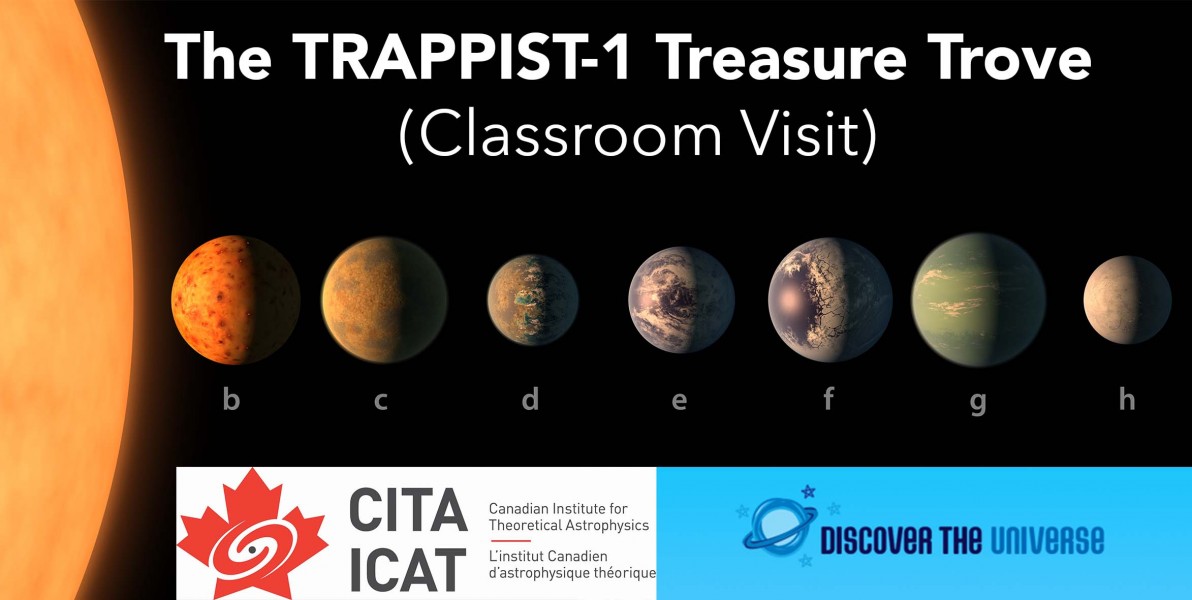Featured News Other Astronomy News
//
//
April 3, 2017
//

The TRAPPIST-1 Treasure Trove (Classroom Visit)
In February of 2017, astronomers announced an exciting development in our exploration of worlds beyond the solar system: not only do 7 Earth-sized planets orbit a nearby star known as TRAPPIST-1, but 3 of them may be able to support liquid water! To celebrate this discovery, the Canadian Institute for Theoretical Astrophysics and Discover t…
Read more »
Featured News Other Astronomy News
//
//
March 27, 2017
//
Research on gravitational waves by CITA Professor Harald Pfeiffer has been featured on CBC news.
Read the artic…
Read more »
Other Astronomy News
//
//
November 13, 2014
//
Rosetta mission’s Philae lander made contact with comet 67P, ten years after the mission began.
Read the full article her…
Read more »
